Wales is one of the four major political divisions that make up the United Kingdom of Great Britain and Northern Ireland. England, Northern Ireland, and Scotland are the other divisions of the United Kingdom. Cardiff is the capital and largest city of Wales.
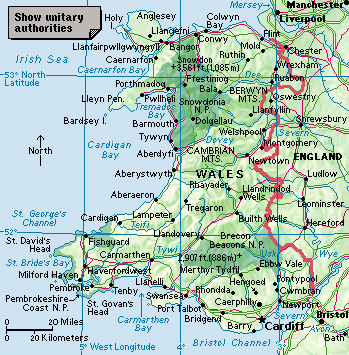
Wales lies on the west coast of the island of Great Britain. It takes up about a tenth of the island. Wales has a wealth of scenic beauty. Its landscape includes low, broad mountains and deep, green valleys. Wales is bordered by extensions of the Atlantic Ocean on the north, west, and south, and by England on the east.
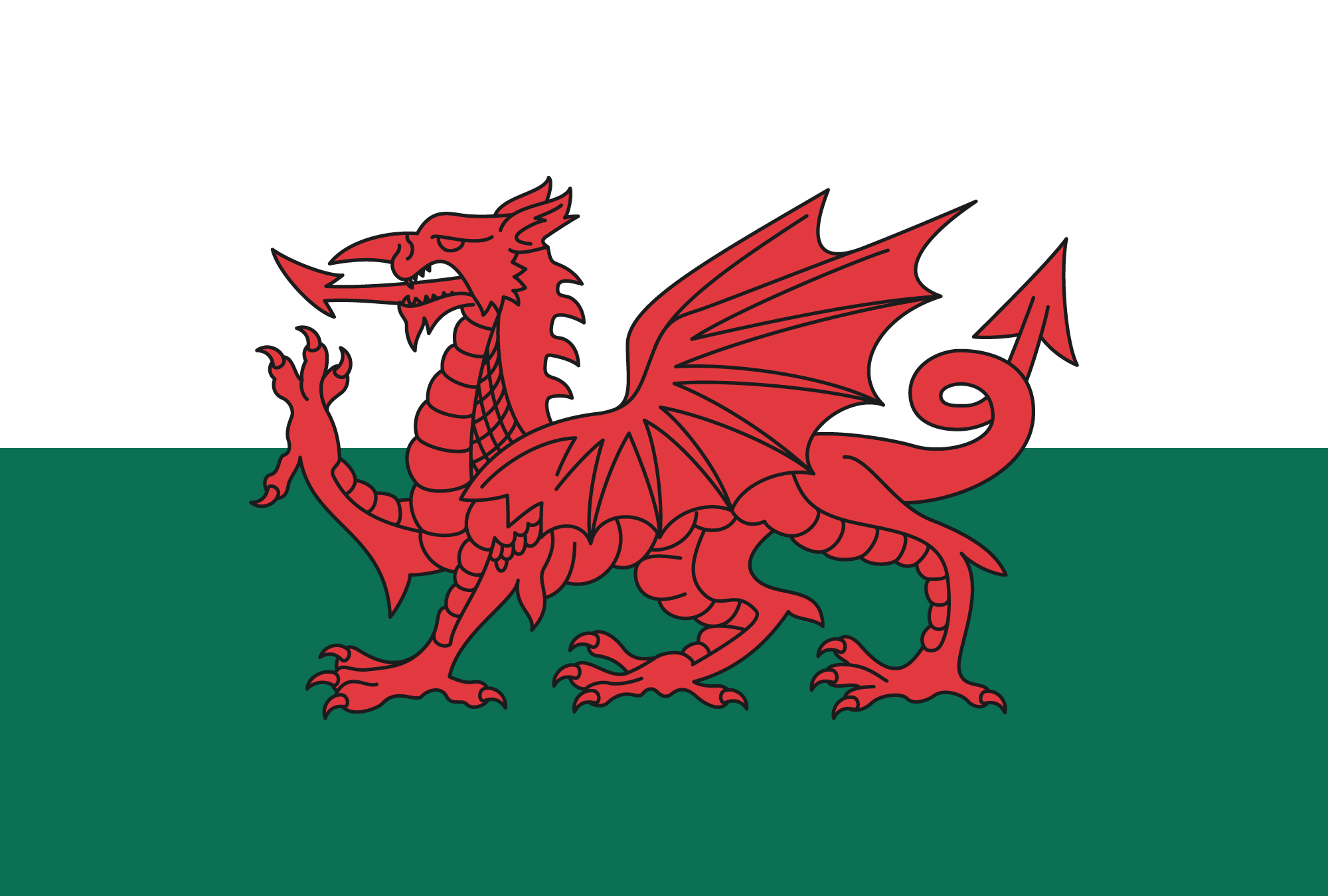
Most of the Welsh people live in the towns, cities, and industrial areas of south and northeastern Wales. Northwest, southwest, and central Wales are mainly rural and are sparsely populated.
The Welsh take great pride in their country. Although Wales has been united with England for more than 450 years, the Welsh have kept alive their own language, literature, and traditions. The Welsh name for Wales is Cymru << KUHM ree >>.
For information on the government and history of Wales, see Wales, Government of, and Wales, History of. See also Welsh language and Welsh literature. For a discussion of the United Kingdom as a whole, of the relation of Wales to the other British political divisions, and of British history, see United Kingdom; United Kingdom, Government of the; and United Kingdom, History of the.
People
Population.
Most of the people of Wales live in the industrialized and formerly industrialized areas of southern Wales. The growth of population in these areas took place in the 1600’s and during the Industrial Revolution, a period of rapid industrialization that began in the 1700’s. At that time, people came to the region from rural Wales and from England. Cardiff, Newport, and Swansea grew as ports to serve the coal and iron industries. They are now the largest cities in Wales. Cardiff became the capital of Wales in 1955. It is Europe’s newest capital and has grown in importance since the establishment of the National Assembly for Wales—now known as the Welsh Parliament, or Senedd Cymru—in the city in 1999.
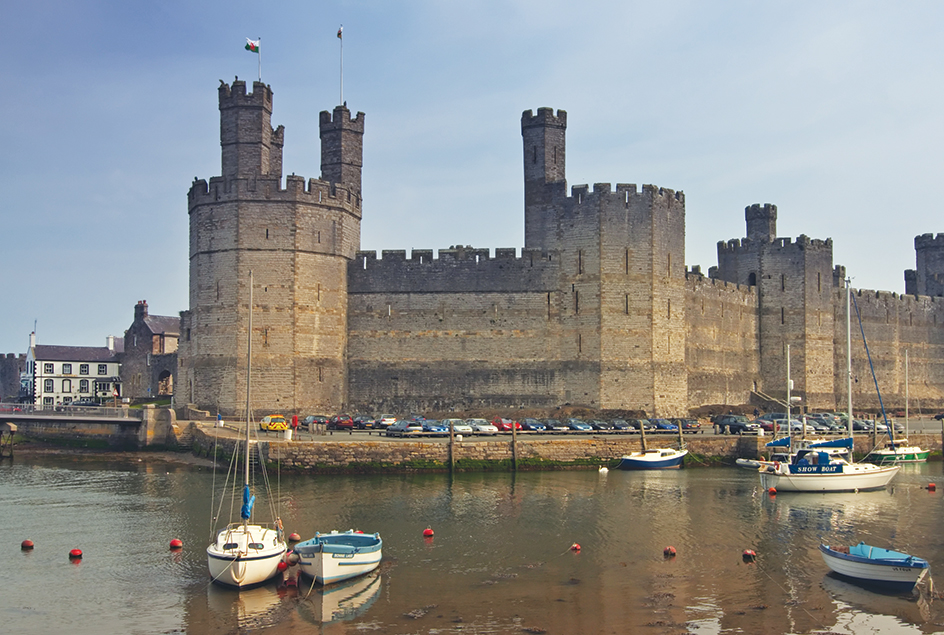
Ancestry.
Some Welsh are descended from prehistoric peoples who colonized Wales from continental Europe thousands of years ago. Many others trace their ancestry to such later settlers as the Celts, Romans, Anglo-Saxons, Vikings, Normans, and English.
Language.
Wales has two official languages, English and Welsh. The Welsh language is one of the oldest languages in Europe. Either English or Welsh may be used in the courts and for government business. Some newspapers are published partly or only in Welsh, and many radio, television, and internet programs are broadcast in both languages.
Welsh is still the daily language in many sections of western and northern Wales. In several unitary authorities in these regions, more than half the population speaks Welsh. Overall, however, the number of Welsh-speaking people has declined. In 1901, about half the population spoke Welsh, but only about one-sixth does today. Since the mid-1900’s, the number of Welsh-language schools has increased dramatically. For more information on Welsh, see Welsh language.
Way of life
In general, the way of life in Welsh cities and towns, in work and leisure, is similar to that in areas of other parts of the United Kingdom. In Wales, as in the United Kingdom as a whole, the pub (public house) is an important part of social life.
City life.
About four-fifths of the Welsh people live in urban areas. Many urban dwellers live in large public housing developments on the outskirts of cities. These complexes were built in the 1950’s and 1960’s, and some of them have fallen into disrepair. Welsh metal-processing industries have declined since the 1950’s, leading to increased unemployment in Welsh cities. Urban areas experienced a rise in crime, overcrowding, and other social problems.
In the 1800’s and early 1900’s, the steep-sided valleys of southern Wales were known for coal mining. This industry has nearly disappeared. With the decline of coal mining, the Welsh have reclaimed the beautiful landscape that the mining industry had spoiled. Many townspeople still live in row houses that were built at the peak of the mining industry. These houses all have the same design and are attached in a row.
Rural life.
Approximately a fifth of the Welsh people live in rural areas. Welsh farms are small, and most are owned by the people who live on them. Many rural people live in stone cottages.
An older Welsh way of life has lasted in rural areas, especially where the Welsh language is the primary one. Ties to religion and to families tend to be stronger in these areas. However, many people fear that traditional customs may soon be lost. Rural housing has become scarce, and farming has become less profitable over the years. As a result, more and more young people have moved to the cities to look for employment and housing. As the young people leave the countryside, they tend to abandon the old values and traditions.
Food and drink.
Most traditional Welsh cooking is simple. Wales is a sheep-raising country, so roast lamb is a popular dish. The most famous Welsh dishes are cawl, a clear broth with vegetables, especially leeks; and Welsh rarebit, which consists of melted cheese and butter served on toast. Other specialties include laver bread (a dish made from seaweed and oats); salmon and trout from Welsh rivers; and Welsh griddle cakes. Beer is a traditional Welsh drink, and many pubs sell locally brewed beer. Ale is especially popular.
Recreation.
Rugby union (rugby football) is the national sport of Wales. The Welsh national rugby union team plays teams from countries throughout the world. In south Wales, each village and town has its own team, and this custom is spreading in the north. See Rugby football.
Another popular sport is association football, the game Americans call soccer. Some professional teams in both north and south Wales play in the Football League, which includes clubs from England and Wales. Most of the other professional teams play in minor soccer leagues, including the League of Wales. There are also many amateur soccer clubs.
Cricket is popular in Wales. Golf has grown in popularity in Wales, which hosted the Ryder Cup competition between American and European professional golfers in 2010. Both sea and river fishing are popular throughout Wales. In rural areas, hunting and horseback riding are also common. Snowdonia National Park and Brecon Beacons National Park have rugged terrain that is excellent for climbing and other mountain sports. Many people visit Pembrokeshire Coast National Park to hike along its coastal cliffs and admire its scenery.
Education.
Wales and England have similar school systems. Education in Wales is the responsibility of the Welsh Parliament, which works with local education authorities.
All Welsh children between the ages of 5 and 16 must attend school. Until the age of 11, children attend primary schools. Then they enter comprehensive schools, which provide all types of education, including academic, vocational, and general courses. Most students leave secondary school at age 16, but many go on to technical colleges or other forms of further education. Many students remain at school until the age of 18 or 19. Students may proceed to a university or other institute of higher education from schools or from other colleges.
Wales has two universities, the University of Wales and the University of Glamorgan. The University of Wales is divided into several federated colleges in different towns and cities throughout the country. The first of the university’s colleges was founded in Aberystwyth in 1872. Later, colleges opened at Bangor, in northwest Wales, and Cardiff and Swansea in the south. The university also includes St. David’s College in Lampeter in central Wales and the University of Wales College of Medicine in Cardiff. The University of Glamorgan, based at Pontypridd, an industrial valley north of Cardiff, was established in 1992. See Wales, University of.
Religion.
About 45 percent of the people of Wales identify themselves as Christian. Many of these people belong to Anglican or Methodist churches. Wales also has a large Muslim population. About half of the people of Wales identify themselves as having no religion.
The Church of England became the official Welsh church after the union of Wales and England in 1536. But during the 1700’s, many Welsh people joined the Methodist Church. In 1811, the Methodist Church separated from the Church of England. The influence of the Anglican Church in Wales then declined. The Welsh Church Act of 1914 declared that the Church of England was no longer the official church of Wales.
The arts.
Wales is a country of poets and singers and is sometimes known as the land of song. The traditions of Welsh literature and music date back more than 1,000 years to the bards (poet-singers) of the Middle Ages (see Bard). Loading the player...
Welsh band music
The choral tradition of Wales developed with the Welsh religious traditions. Welsh songs include internationally famous hymn tunes. Wales has outstanding men’s choirs, such as the Treorchy Male Choir in the Rhondda Valley. The Welsh National Opera Company has become famous throughout the world.
In addition to classical music, Wales has produced a number of popular musicians. These include the rock band Manic Street Preachers, the classically trained singer Charlotte Church, and the opera singer Bryn Terfel.
Wales has a number of modern theaters throughout Wales. A new generation of Welsh actors, including Timothy Dalton and Catherine Zeta-Jones, has emerged to succeed such veteran actors as Richard Burton, Anthony Hopkins, and Desmond Llewellyn.
The visual arts have grown in strength in Wales throughout the 1900’s and early 2000’s. Many famous artists, including the British painter Graham Sutherland, have lived and worked in Wales.
The eisteddfod << eye STEHTH vod >>, a popular Welsh tradition, is a festival of poetry and music in which performers compete. Its origins date back to the Middle Ages, when Welsh princes held bardic and musical contests. In the 1790’s, some of the Welsh began to revive older cultural traditions. The modern eisteddfod arose from this movement. Annual eisteddfods, or eisteddfodau, are held throughout the land. The largest is the Royal National Eisteddfod. This festival is held in various cities and towns, alternating between northern and southern Wales. Only Welsh is used at the Royal National Eisteddfod. The Welsh League of Youth (Urdd Gobaith Cymru) holds an annual eisteddfod for children, and the International Music Eisteddfod is held in July at Llangollen. For more information on the literature of Wales, see Welsh literature. 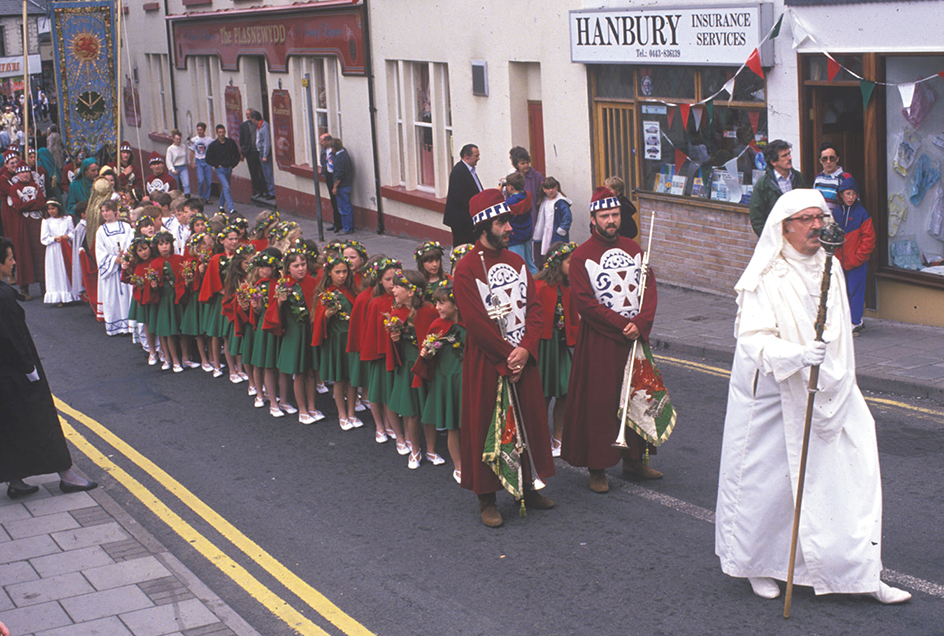
The land
Wales occupies a broad peninsula on the west coast of the island of Great Britain. It is bounded on the east by England and on the south by the Bristol Channel. St. George’s Channel on the west and the Irish Sea on the north separate Wales from Ireland.
Wales has many areas of scenic beauty, including the irregular coastline, the peninsulas of Gower in the south and Lleyn in the north, and the national parks of the Brecon Beacons and the Pembrokeshire Coast in the south and Snowdonia in the north.
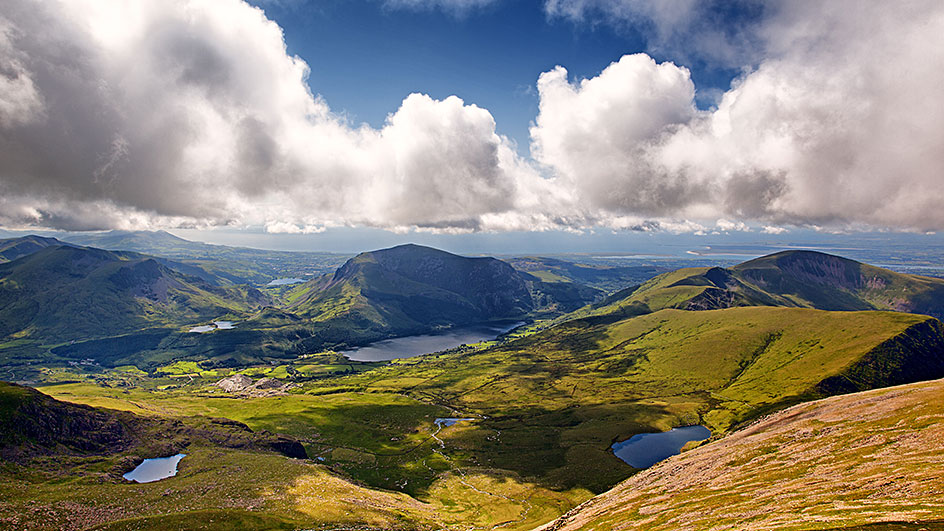
Surface features.
Most of Wales consists of mountains and upland plateaus. The Cambrian Mountains cover about two-thirds of Wales. In north Wales, the mountains are steep and rugged. The highest peak in the country, 3,561-foot (1,085-meter) Snowdon (called Yr Wyddfa in Welsh), rises in northwestern Wales. It is the highest peak in the Snowdonia range, which is known in Welsh as Eryri (the Eagle’s Nest).
In central and southern Wales, the Cambrian range becomes flatter and forms large plateaus cut deeply by valleys. On the plateaus are forests, pastures, grassy plains, moors (open wasteland), and bogs (swamplands). Many small lakes and waterfalls dot the mountain and plateau regions.
Coastal plains and river valleys cover about a third of Wales. Low, narrow plains stretch along the south and west coasts. The broadest lowlands are along the Rivers Dee, Severn, and Wye, near the English border.
A large island, Anglesey (Ynys Mon in Welsh), lies off the northwest coast. The Menai Strait separates the island from the mainland.
Rivers and coastline.
The longest rivers in Wales are the Severn and the Wye. Both begin near Aberystwyth, flow eastward into England, and then turn south and empty into the Bristol Channel. The Severn stretches for about 200 miles (322 kilometers) and is one of the most important rivers in the United Kingdom. The Wye extends 130 miles (209 kilometers). The River Dee, which flows northeastward from Lake Bala into the Irish Sea, forms part of the boundary between Wales and England. The Rivers Dyfi, Teifi, and Tywi drain the west coast of Wales. 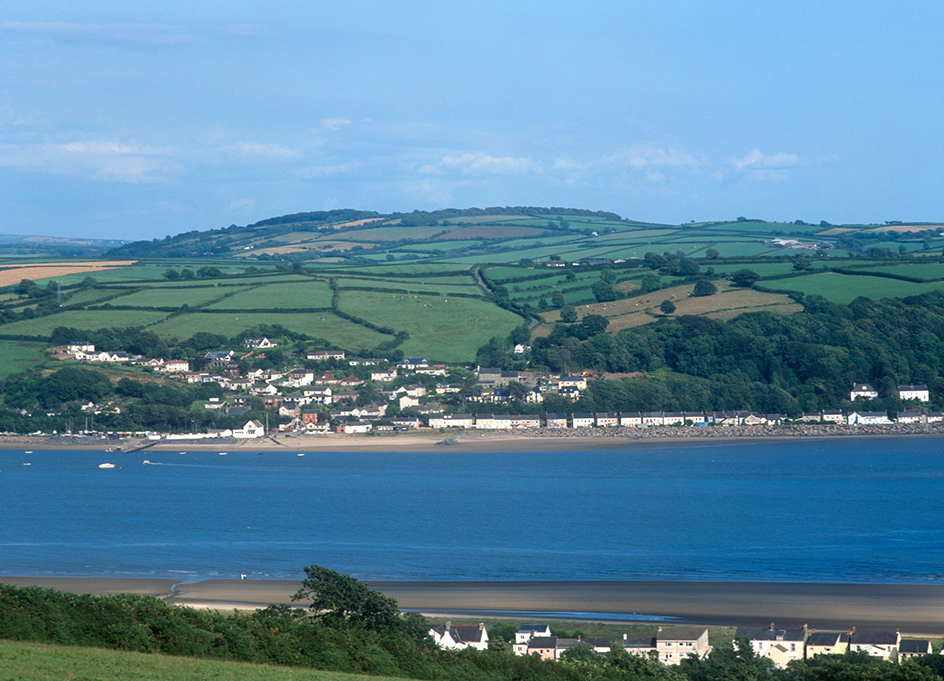
The Welsh coastline is 614 miles (988 kilometers) long. Much of it is irregular and lined with cliffs. Many natural bays and harbors lie along the coast.
Climate.
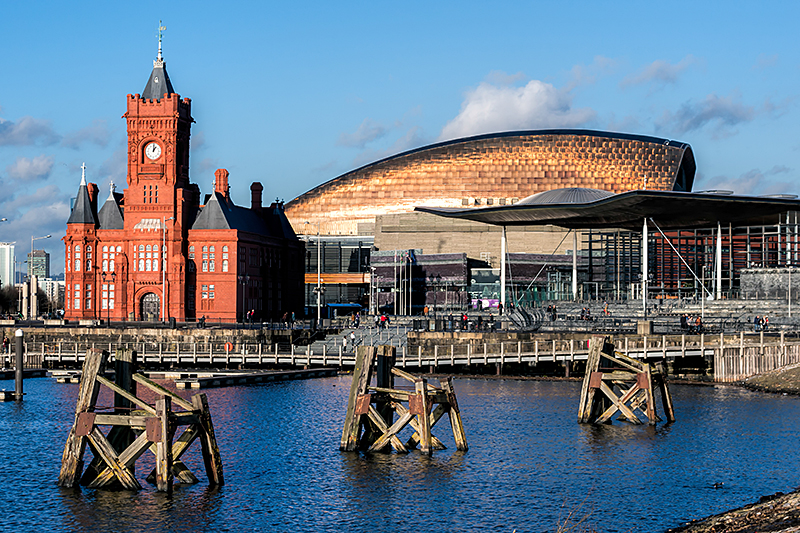
Wales lies directly in the path of westerly winds blowing off the Atlantic Ocean. These westerly air flows bring heavy rain, especially to the mountainous regions of Gwynedd. In this district, annual rainfall may sometimes reach more than 120 inches (300 centimeters). Other mountainous areas may receive more than 100 inches (255 centimeters) per year. Snowfalls are common in the mountainous districts. Eastern Wales and the low-lying coastal districts receive annual rainfalls of about 30 and 40 (75 and 100 centimeters). Temperatures in Wales vary among the different regions. Coastal areas are generally warmer than the mountains. Cardiff has an average high temperature of 45 °F (7 °C) in January and 70 °F (21 °C) in July.
Economy
Before the 1700’s, Wales had an agricultural economy, in which sheep and cattle raising played an important part. Coal mining and metal processing became the chief industries of Wales in the 1800’s during the Industrial Revolution. Today, however, the economy of Wales depends more on manufacturing and service industries. They are concentrated in south and northeastern Wales.
Natural resources.
Coal was the most important natural resource of Wales until the decline of the mining industry in the late 1900’s. Extensive deposits remain in the south Wales coal field between the Rivers Tywi and Usk, but little coal is now mined. A smaller coal field lies in northeast Wales. Limestone is also quarried in South Wales.
Northwestern Wales is famous for its large slate quarries. The rocks of north and central Wales also contain lead, zinc, and gold.
Wales has plentiful water resources, and large reservoirs have been formed by damming rivers and flooding deep valleys. Some hydroelectric power is generated from this water. Several large cities in England rely heavily on Welsh water, which is piped from reservoirs in central and north Wales.
Service industries
are the largest employers in the cities and towns of Wales. Leading Welsh service industries include banking, insurance, finance, and business services; education; health and welfare services; public administration; and the retail and wholesale trades.
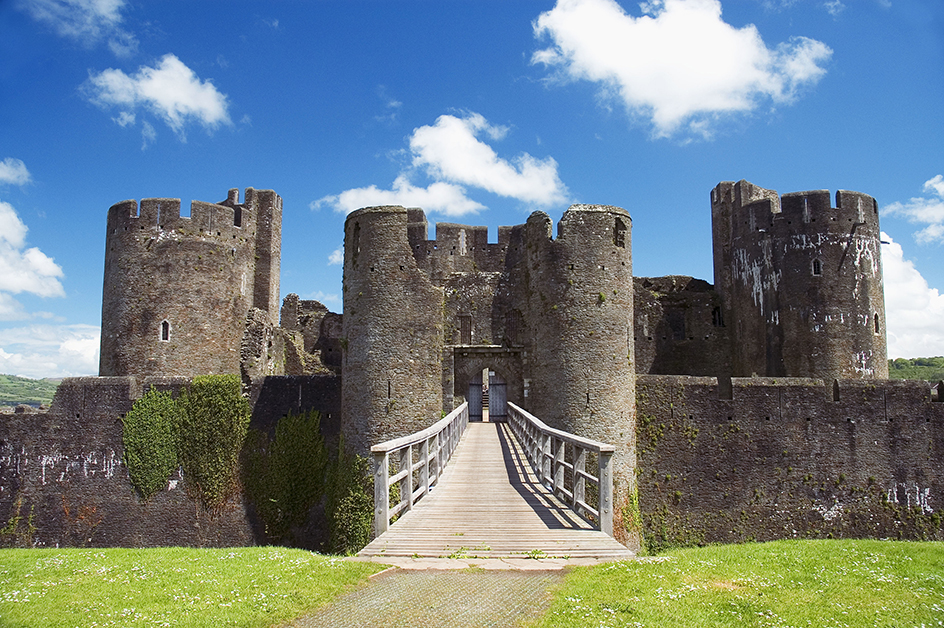
Manufacturing.
Steel manufacturing or processing plants operate at Llanwern, near Newport, and at Port Talbot. A large plant for producing tin plate is at Llanelli. Other products manufactured in Wales include automobile parts, chemicals, electronic and electrical equipment, plastics, and synthetic fibers.
Agriculture.
Livestock production ranks as the leading agricultural activity in Wales. Farmers raise beef and dairy cattle in the lowlands, and southwest Wales is the center of the Welsh dairy industry. Farmers in the uplands raise sheep for meat and wool. The main crops grown in Wales include barley, oats, potatoes, and wheat.
Mining.
Coal mining was once the most important industry in Wales, but it has declined steadily because of falling demand for coal and the difficulties in extracting the fuel. The largest coal fields lie in the south between Kidwelly and Cwmbran.
Transportation and communication.
An extensive system of well-paved roads covers Wales. An expressway runs through southern Wales from bridges over the River Severn on the Welsh-English border. High-speed trains connect northern and southern Wales with London, and additional rail lines crisscross the land. Cardiff has the only international airport in Wales.

Wales receives radio and television programs from the British Broadcasting Corporation. Commercial radio and television stations also broadcast throughout Wales. The Western Mail, a daily newspaper published in Cardiff, is distributed throughout Wales.
